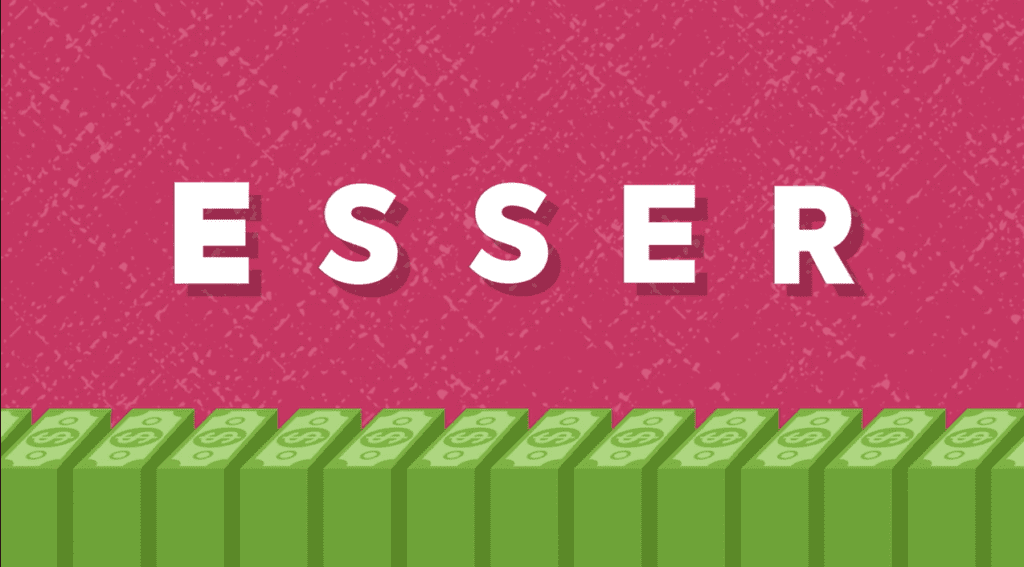ESSER Spending and Pandemic Recovery: Where Do We Go From Here?
The deadline for school districts to decide how they will spend any remaining federal pandemic-relief funds is September 30.

The time has come. Policymakers, advocates, and educators alike have been nervously anticipating this moment for more than three years. And now, the deadline for school districts to formally decide how they will spend any remaining federal pandemic-relief funds is here.
The American Rescue Plan’s Elementary and Secondary School Emergency Relief Fund (ESSER) provided states and districts with a historic $122 billion to help schools meet the unprecedented demands of providing educational opportunities during the pandemic and to support student learning recovery, including tutoring, high-quality instructional materials (HQIM), and mental health resources. Previous work by EdTrust reviewed district ESSER spending plans and highlighted equity-focused, evidence-based promising practices to support students in pandemic recovery.
This September 30th deadline is an important reflection point to take a step back and assess the state of academic recovery, which programs and policies districts enacted to support academic recovery, and how to continue providing all students with the academic support they need moving forward.
While we’re waiting for more data about the pandemic and its impact on students, here’s what we do know:
The pandemic exacerbated the resource inequities and opportunity gaps that already existed for Black and Latino students, students from low-income backgrounds, multilingual learners, and students with disabilities. Students from low-income backgrounds are making slower recovery than their affluent peers, while special education referrals are at an all-time high.
Researchers are starved for data that helps us understand the full picture of progress and continued areas of focus regarding academic recovery. The release of the most recent state assessment results, the 2021-22 Civil Rights Data Collection, and the 2024 NAEP data will shine a light on the opportunities and outcomes for students — especially students of color, students from low-income backgrounds, and multilingual learners.
While there is much more work to be done to better understand the current state of students’ needs and support all students in recovering from the impact of the pandemic, there is hope. We are learning what policies and programs work. Over the last few years, EdTrust and other organizations have highlighted many promising practices that have the potential to continue to support students’ recovery — such as making investments to promote students’ social, emotional, and academic development, supporting a strong and diverse teacher workforce, targeting resources to address the needs of English learners and students with disabilities, and implementing strategies to address unfinished learning.
And there are bright spots and evidence of success in districts across the country, such as Compton Unified in Los Angeles, where the rate of academic improvement for Black, Latino, and students from low-income backgrounds exceeds pre-pandemic rates of improvement. We need to learn more about what contributes to these patterns of improvement — from specific interventions to broader practices, and even overall school culture — and encourage other districts to adopt those practices.
Looking forward, researchers and advocates should use the limited data we do have about spending, academic recovery, and students’ access to resources — particularly for students of color, students from low-income backgrounds, and multilingual learners — to develop new insights into academic acceleration. This review of data must be accompanied by conversations with district and school leaders to understand how they invested their resources, what worked, and how they will prioritize and sustain the most impactful evidence-based strategies.
Many of us knew in the early days of the pandemic that full academic recovery was going to require a much greater and more sustained investment. That means that now is not the time to throw in the towel and abandon the districts and schools whose leaders are doing the hard work of supporting students and communities. Now is the time to learn from what worked, from the education leaders who made it happen. Now is the time to invest more in our public schools, especially those that have been under-resourced for far too long.
District leaders won’t be able to fill the gaps left by expiring ESSER funds alone. The highest poverty districts received more than $6,000 per student in ESSER funding — that’s nearly half of the highest poverty districts spent per student before the pandemic, around $13,500. And ESSER funding mattered: two sets of researchers (Goldhaber & Falken and Dewey et al) have determined that pandemic relief spending has contributed to at least some of that recovery. But in part because of decades of underinvestment from their local communities, states, and the federal government, the impact of ESSER funding on academic achievement gains has been less substantial for districts that serve majority Black and Latino students.
As we look toward a future without this additional federal aid for schools and districts, advocates need to ensure that district, state, and federal leaders are focused on sustaining momentum and responding to the fiscal cliff with equity front and center. The work must continue to make sure students, especially those who were underserved before the pandemic — and continue to be — get the rigorous, culturally sustaining educational opportunities they deserve.